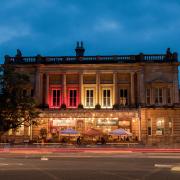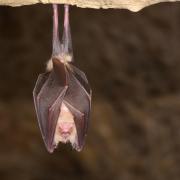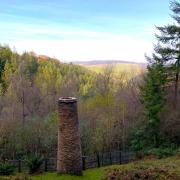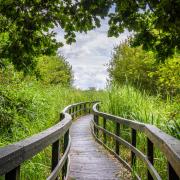Most religions include the tradition of pilgrimage and today the definition of who is a pilgrim is tricky to pin down. Perhaps all of us who gain strength, hope and a sense of well-being from our walking are, at heart, modern pilgrims.
Porlock Pilgrim's Trail is a 29 mile loop visiting nine of Exmoor's churches and chapels including a tin tabernacle, England's smallest parish church, Lorna Doone's Oare church and two tiny half-forgotten chapels.
In 2022, Porlock Pilgrim's Trail was inaugurated with the hope that it would enable walkers to visit nine of these churches and chapels using ancient routes that have been walked and ridden by clergy and parishioners for hundreds of years. This month's short circular walk uses the Priestway which links Stoke Pero with Luccombe. The walk crosses some of Exmoor's stunning countryside – ancient oak woodlands, wild moors and high pasture – and visits two beautiful, and very different, old churches. Most religions include the tradition of pilgrimage and today the definition of who is a pilgrim is tricky to pin down. Perhaps all of us who gain strength, hope and a sense of well-being from our walking are, at heart, modern pilgrims.

2. Turn left over the bridge and follow the path to climb through the wood. Eventually, keep right, signed with a blue arrow, to reach a field gate. Fork right along the boundary to a gate into a walled lane leading to Church Farm's yard. Cross the yard to reach a small lane and then turn left to reach Stoke Pero church.
Stoke Pero church is Grade II listed and, at 309m above sea level, the church is the highest on Exmoor and the second highest in England. The church has no electricity; many services are candle lit. On the wall is a list of Rectors that dates back to 1242.
The church's tower was built in the 13th century but the rest of the church was rebuilt in 1897 by the owner of the manor, Sir Thomas Dyke Acland. All the timber for the rebuilding of the church was carried up from Porlock by a donkey called Zulu; his picture, drawn by locally acclaimed artist and moor-dweller, Hope Bourne, hangs on one wall. During these building works three sets of human remains were uncovered from directly under the old north wall, suggesting that the 13th century church had been built on the site of an even older churchyard.
If you look at the gravestones some have rather odd sentiments on them, for example Jane Rawle: 'As I am now, so must you shortly be; Therefore prepare for Death and follow me'.
3. Retrace your steps through the farm and along the walled lane. Then keep ahead to cross three fields - do not re-enter the wood. At the third field, keep the fence to your right – watch for blue waymarks; there are wonderful views across Exmoor's hills and valleys. Cross Prickslade Combe, where once there was a remote farmstead, and two further fields before finally passing through a gate in the corner of the second field to enter a lane. Keep ahead, through another gate, signed Horner Hill and, at the end of the field, keep ahead to enter ancient oak woodland.
4. After passing a bench on your right – a great place for a rest and to take in the view - fork left downhill unsigned and not following the blue waymarks. After a path joins from the right take the next right downhill and then left, also downhill, now following the blue waymarks again. At the bottom cross the bridge over East Water and start the steep climb, signed Webber's Post.


If you lift the rug by the pulpit you will find a fine brass dedicated to William Harrison, a wealthy local farmer who died in 1615. Above, the roof bosses in the Nave show the heads of two women and two men, possibly the benefactors of the new 13th century glass in the south aisle's East Window.
6. Leave the churchyard through the gate that you arrived through and turn right along the path which shortly reaches a lane. Keep ahead on the tarmac lane for 250m and immediately after the crossroads, bear left through a gate into the wood. Now follow the track, keeping right at every junction until you eventually descend to a road. Turn left to enter the village of Horner once more.
The Pilgrim's Trail's website, porlockpilgrim.co.uk, contains lots more information about the entire 29 mile of the trail. You can also buy the Pilgrim's Trail guidebook on the site as well as from Porlock Information Centre or any Exmoor National Park Visitors' Centre. The book contains a page about each of the churches and chapels, a route description of the whole trail and links to downloadable .gpx mapping files.
There is a Pilgrim's Trail ink stamp in each church and chapel which can be used to record your walking progress. The Guidebook has a space at the top of each church and chapel description for you to place your stamp. When you complete the trail you can sign your name in the record book in Porlock church.

Start Point: Horner National Trust pay-and-display car park
TA24 8HY; SS 8977 4557; ///plotted.smirks.backhand
Distance: 6.5 miles (10.5 km). Allow 3 hours. There are two short but steep climbs.
Map: OS Explorer OL9 (Exmoor)
Refreshments: There are two seasonal tea shops in Horner as well as pubs, cafes and shops in nearby Porlock (1.5 miles away). Stoke Pero churchyard and Webber's Post are both ideal picnic locations.



























